Aiglon Native Garden
Planting a native habitat garden on the Aiglon Pocket Park
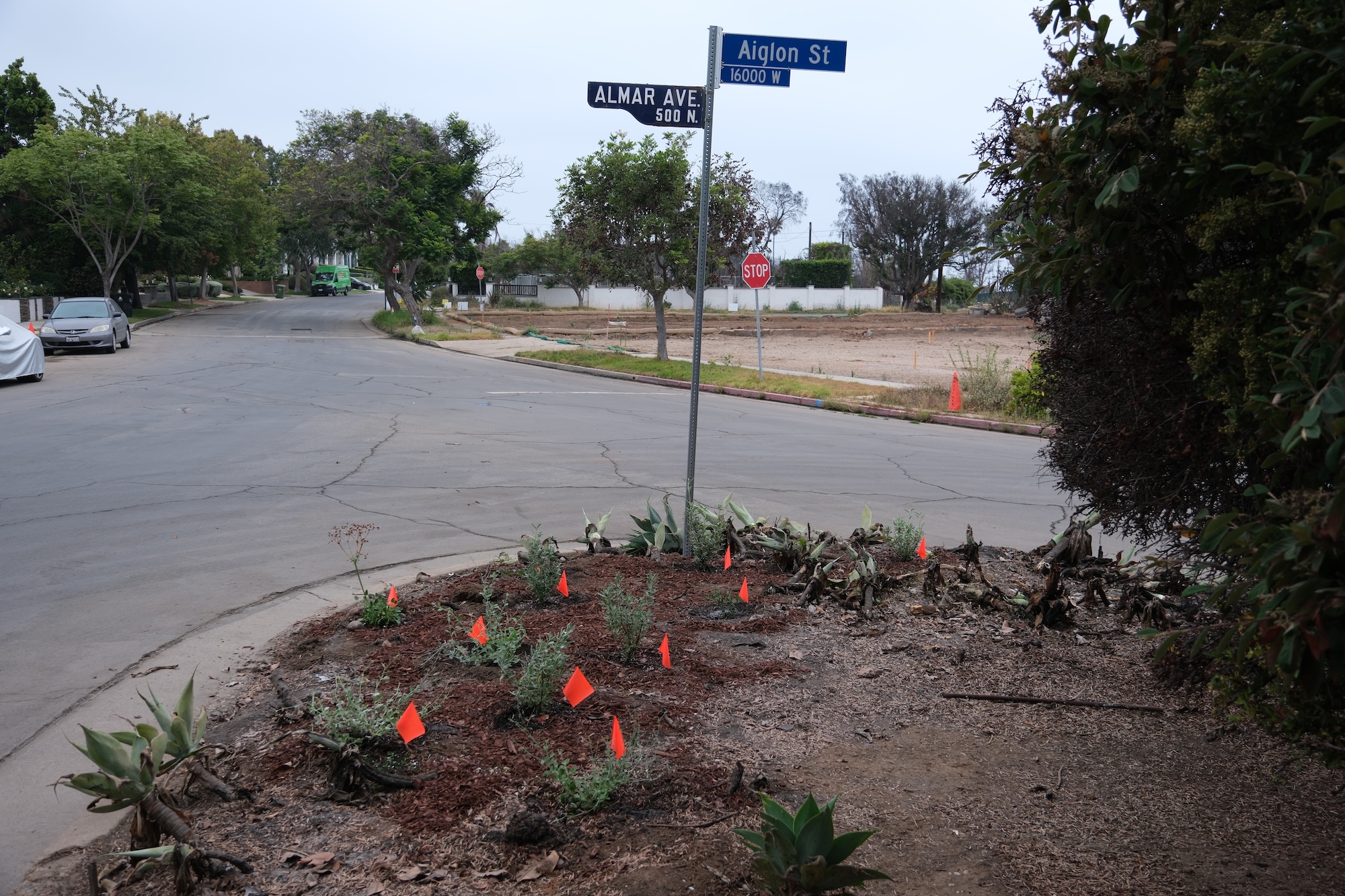
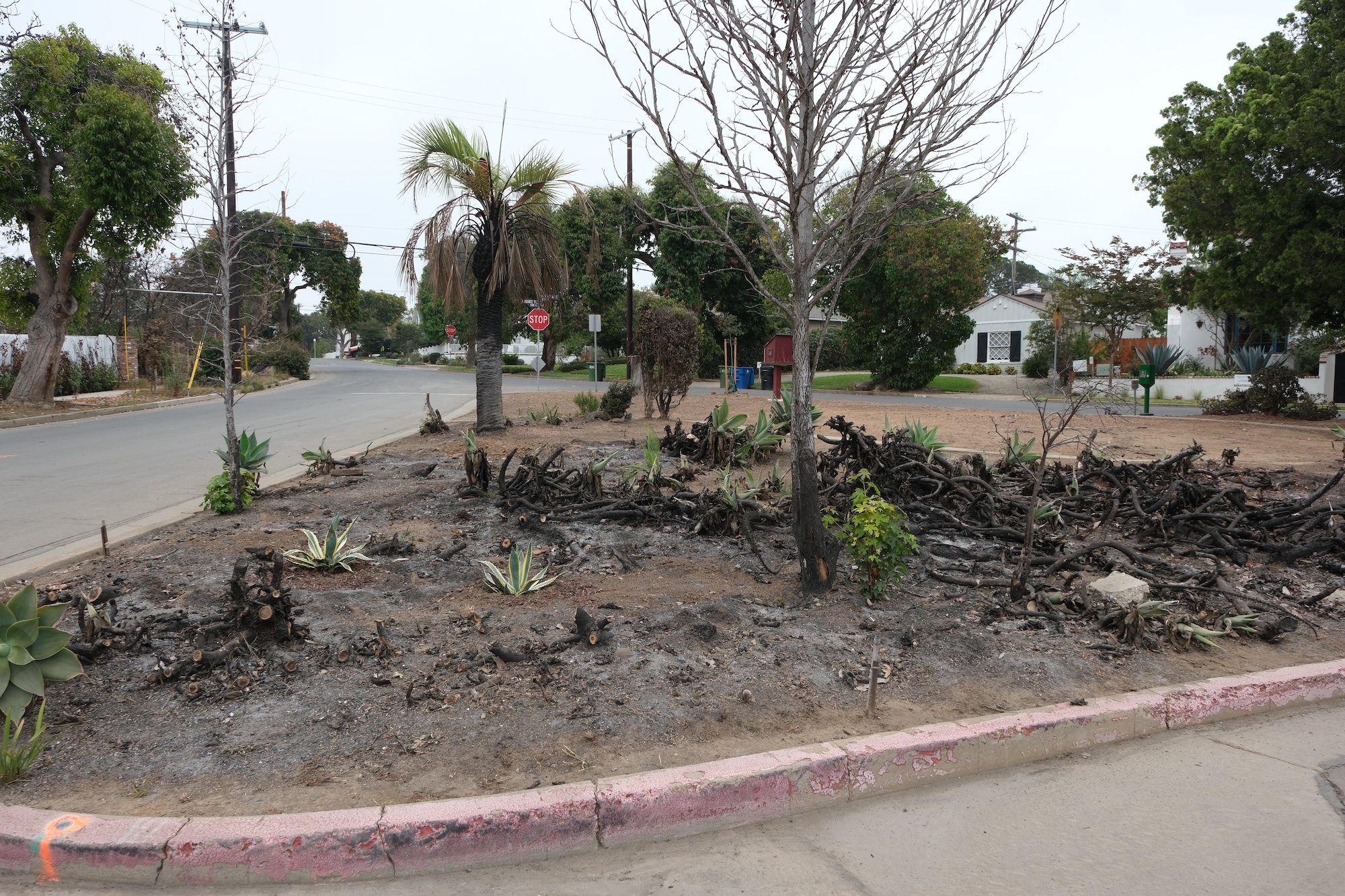
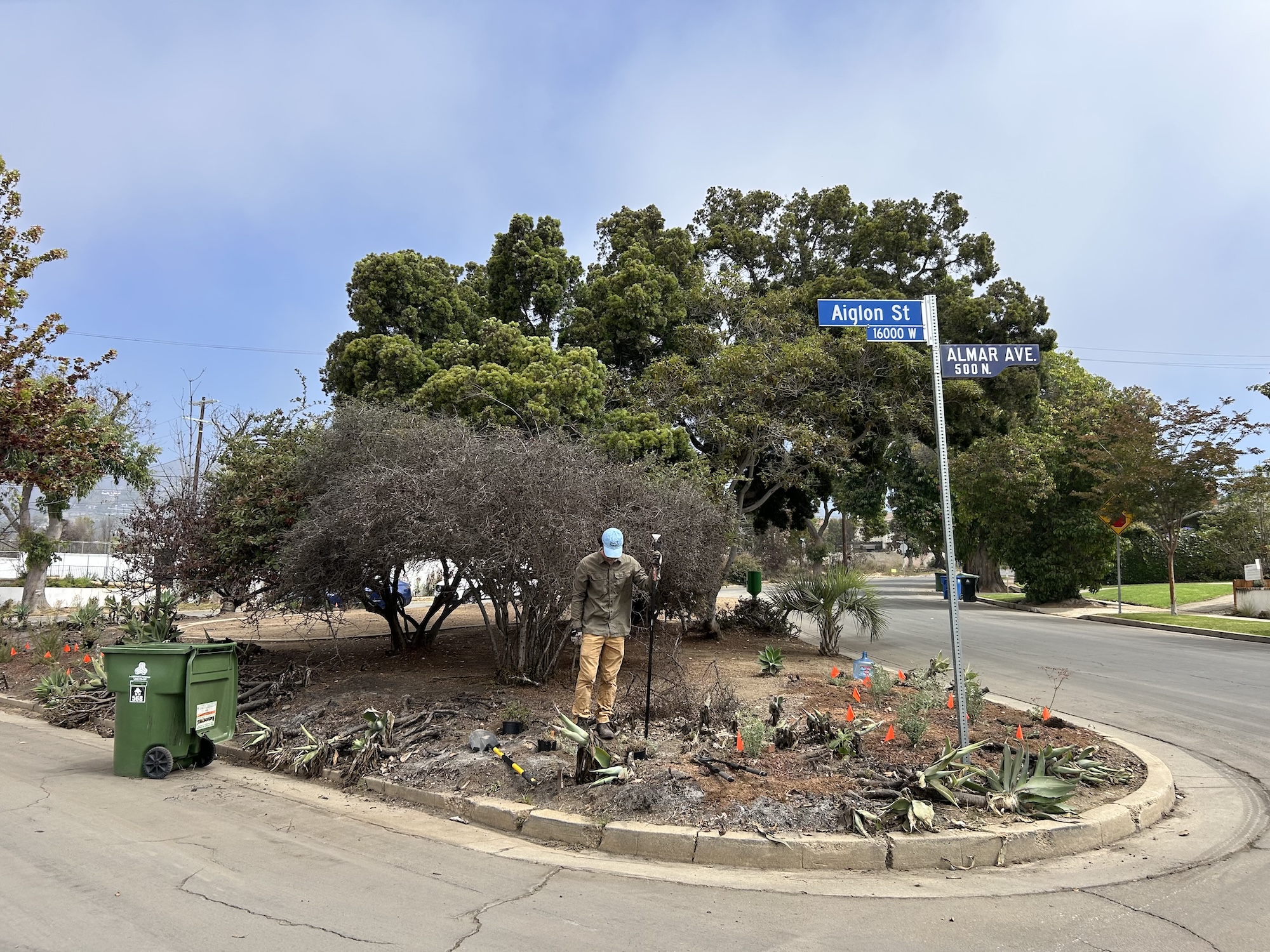
The Park
We are planning to turn Aiglon Pocket Park into a native habitat garden for local butterflies, bees, and birds, featuring drought-tolerant California plants that support pollinators and restore the natural ecosystem.
This traffic island is a 5,200 sq. ft. triangle in the El Medio Bluffs, at the triple intersection of Aiglon St, Almar Ave, and Tahquitz Pl, just on the border of the fire perimeter. This makes it perfectly suited for restoration, providing a buffer for the neighbors on one side from the construction, and something new for neighbors on the other side to look forward to when they return. The park itself had minor damage from the fire. Most of the Agave growing there burned, and has since been removed. There was also a little free library, which was undamaged.
The park is divided into two sections. The "top" section has historically been grass with one tree and the library. The "bottom" section had mostly Agave and some trees. Our plan is to replant this with native species.
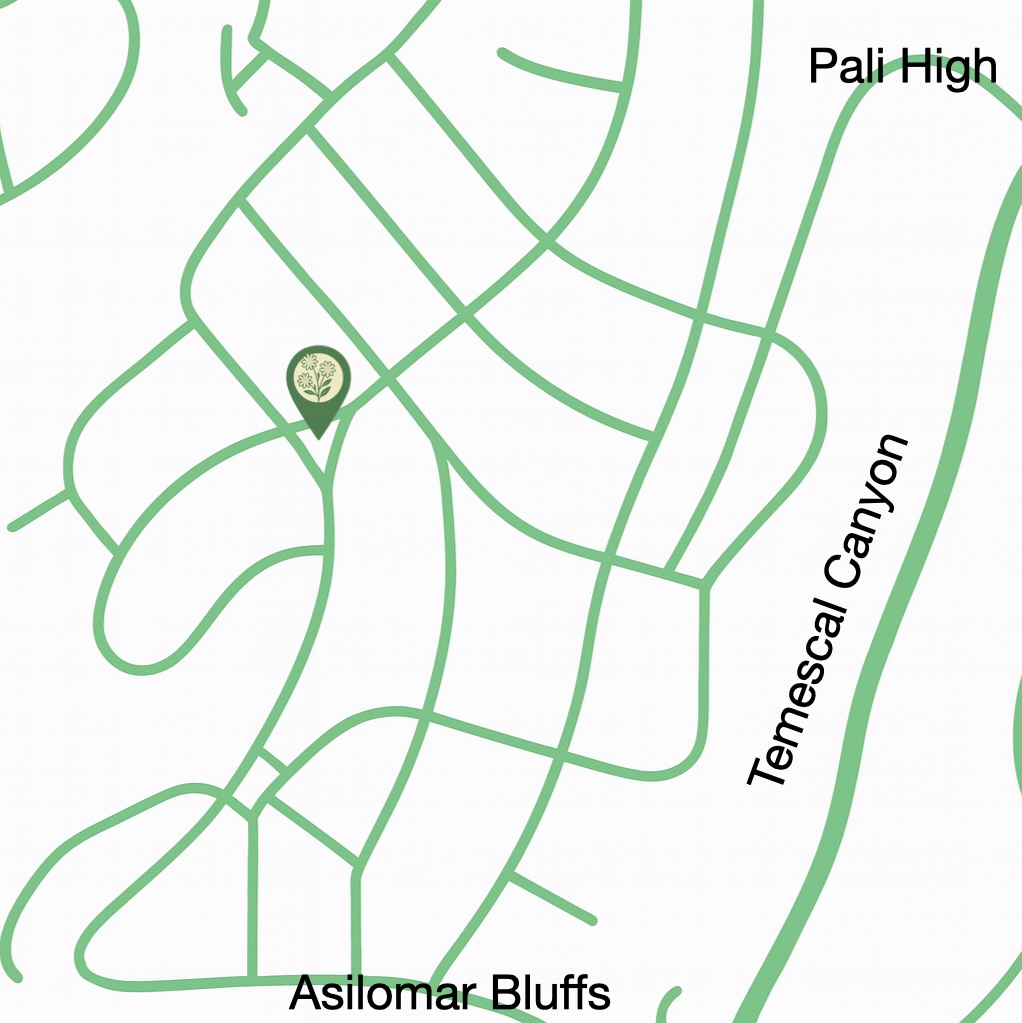
Our Plan
We will re-seed the top section of the park (1,200 sq. ft.) with native grass. The bottom section (4,000 sq. ft.) will be transformed from mostly dirt (since the Agave burned) into a native plant garden. The large Podocarpus tree will be preserved with shade tolerant plants added under it, and the liquid amber tree will also stay.
Species
For the top section we will plant Molate Red Fescue seed, a CA native grass.All plants will be sourced from Theodore Payne Foundation nursery, ensuring high-quality local native species.
The bottom section will consist of:
- Sage
- Salvia leucophylla (Purple Sage)
- Salvia apiana (White Sage)
- Artemisia californica (California Sagebrush)
- Salvia clevelandii (Cleveland Sage)
- Salvia 'Allen Chickering'
- Ceanothus
- Ceanothus thyrsiflorus (Blue Blossom)
- Ceanothus ‘Yankee Point’ (Trailing Ceanothus)
- Ceanothus ‘Ray Hartman’ (Tall, upright form)
- Ceanothus megacarpus (Big Pod Ceanothus)
- Manzanita
- Arctostaphylos ‘Howard McMinn’
- Arctostaphylos glauca (Bigberry Manzanita)
- Arctostaphylos densiflora ‘Sentinel’
- Buckwheat
- Eriogonum fasciculatum (California Buckwheat)
- Eriogonum grande var. rubescens (Red-Flowering Buckwheat)
- Eriogonum arborescens (Santa Cruz Island Buckwheat)
- Eriogonum cinereum (Ashyleaf Buckwheat)
- Baccharis pilularis (Coyote Brush)
- Heteromeles arbutifolia (Toyon)
- Hesperoyucca whipplei (Chaparral Yucca / “God’s Candle”)
- Epilobium canum (California Fuchsia)
- Malosma laurina (Laurel Sumac)
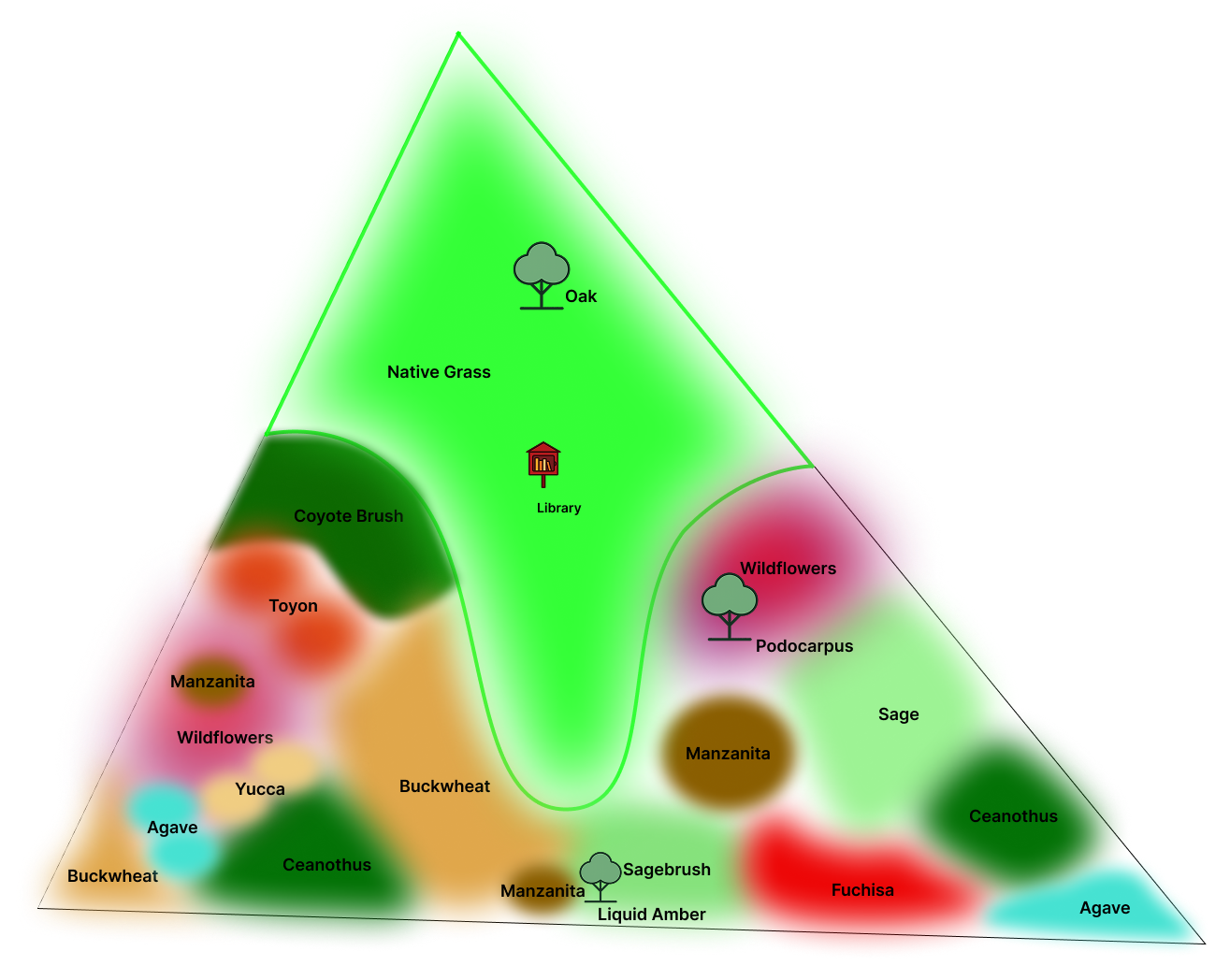
Palisades Beautiful will maintain the site for 5 years, ensuring that the plants are watered and cared for during their establishment period. This will include quarterly volunteer events for weeding/pruning/mulching. After this, the plants will be fully established, and the garden will no longer require regular watering.
Irrigation + Drainage
The park already has a LADWP connection. However, it has been capped and is missing a meter. We will have to contact LADWP to get a new meter and service connected. We will install a hose bib for watering and have volunteers perform the watering manually with a hose. The three streets around the park drain water from the community away from the triangle, so we don’t need to worry about additional drainage concerns. Any excess water on the park, either from irrigation or rainfall, can run off on the existing ditch exiting the triangle onto Aiglon.
Estimated Costs
Annual water costs will be ~$2,300
1-gallon plants (x75 total, each covers ~25 sq ft and we already have ~40) $944:
- 8 × Salvia leucophylla $96
- 8 × Salvia apiana $96
- 8 × Salvia clevelandii $96
- 8 × Salvia 'Allen Chickering' $96
- 5 × Ceanothus ‘Yankee Point’ $70
- 5 × Arctostaphylos ‘Howard McMinn’ $60
- 8 × Eriogonum fasciculatum $96
- 8 × Eriogonum grande var. rubescens $112
- 8 × Eriogonum cinereum $112
- 5 × Baccharis pilularis $60
- 10 × Epilobium canum $140
- 1 × Malosma laurina $10
- 1 × Ceanothus ‘Ray Hartman’ $160
- 2 × Arctostaphylos glauca $350
- 2 × Arctostaphylos densiflora ‘Sentinel’ $300
Schedule
- 💧 Request LADWP reconnection and water meter installation
- 🧰 Hire plumber to install hose bib and connect to capped line
- 🪓 Grind out two tree stumps and remove two small palm trees
- 📦 Install small storage shed with hose and watering tools
- 🪵 Spread mulch and prep planting holes
- 🌱 Seeding top section with Molate Red Fescue
- 🌼🎉 Community planting day for all shrubs and wildflowers